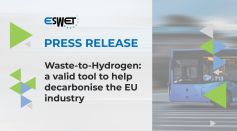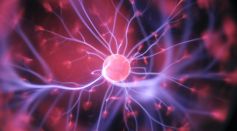Tags: Energy

Waste-to-Hydrogen: A Valid Tool to Help Decarbonise the EU Industry

Renewable Energy Essential to Sustainability Strategies
Quantum Confinement in Nano-Photocatalyst: Hydrogen from Solar Water Splitting Contributes Its Production From Green Resources
Nuclear Fusion: New Superconducting Magnet Achieves Milestone to Practical, Commercial, Carbon-Free Power

Nuclear Fusion: Ex-CIA Analyst Says US, China Race Over Solar Power; Is EU Lagging Behind?
Scientists Detect 1,600 Fast Radio Bursts in 47 Days Using The World’s Largest Radio Telescope
Silicon-Carbide Nanotubes: New Study Reveals Relations Between Hydrogen and Its Storage, Bringing the Energy Into Daily Use

Crop Plant Resiliency Using Energy Conversion Found During Photosynthesis; May Develop Immunity from Stress, Bacteria
One Step Closer to Understanding Cosmic Rays: Scientists Explain Origin of Highest-Energy Particles in the Universe

Energy Efficiency in US Buildings Could Decrease Thousands of Annual Premature Deaths Due to Particulate Matter

Heart's Kinetic Energy Could Power Lead-Free Artificial Cardiac Pacemaker for Implant

Nuclear Fusion Test in Lab Hailed as Holy Grail in Quest for Clean Energy
China Embraces Space-Based Solar Power To Meet 2060 Carbon Neutral Target
Jupiter Experiencing Energy Crisis for Decades, Global Heat Maps Created to Study the Problem
Birnessite Reexamined: 'Classic" Material Finds New Potential for Electrochemistry, Energy

Moon Mining May Be Possible to Acquire Gas, Solving Earth's Energy Crisis

EEI: Earth's Energy Imbalance is Human-Induced and Less Than 1% Natural, Study Says
China Begins to Build Its Small Modular Nuclear Reactor that Will Generate a Billion kWh Every Year
Generating Antimatter by High-Intensity Lasers Possible by Producing Plasma-Level Energy Similar to Neutron Star

Lint-Microfibers Found in Clothes Dryers Can be Converted Into Energy Using Pyrolysis Treatment
Most Popular

Can the World Run Out of Water? Water Scarcity Science and Climate Impact Explained

Solar Maximum 2026: Inside the Sunspot Cycle and Solar Activity Forecast Astronomers Are Watching

Volcanic Warning Signs: How Magma Movement Reveals Eruption Prediction Clues for Geologists

How Tsunamis Form and Travel at Extreme Speeds: Seismic Waves and Coastal Hazards





